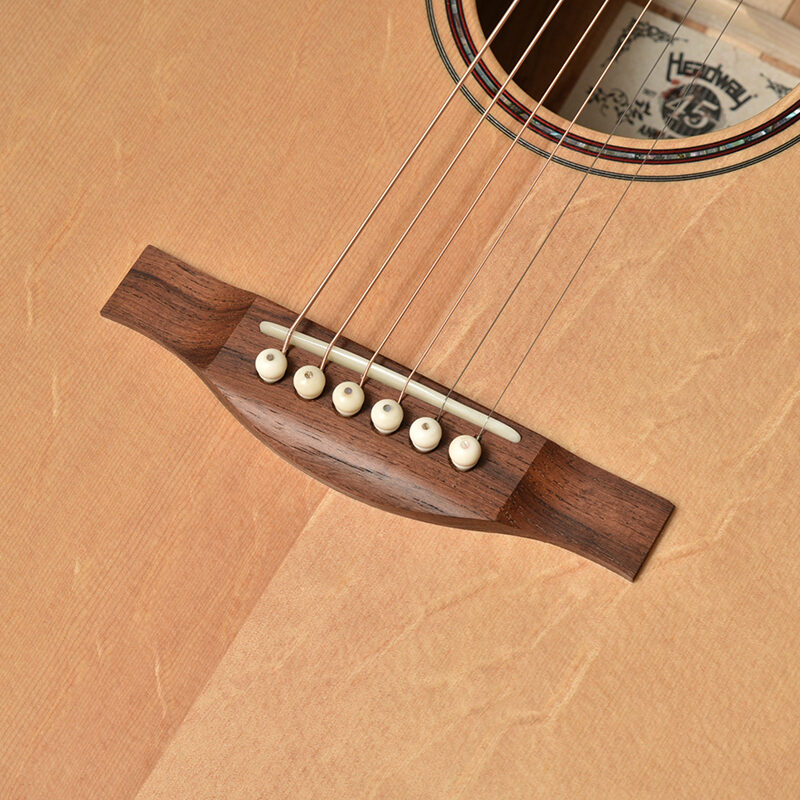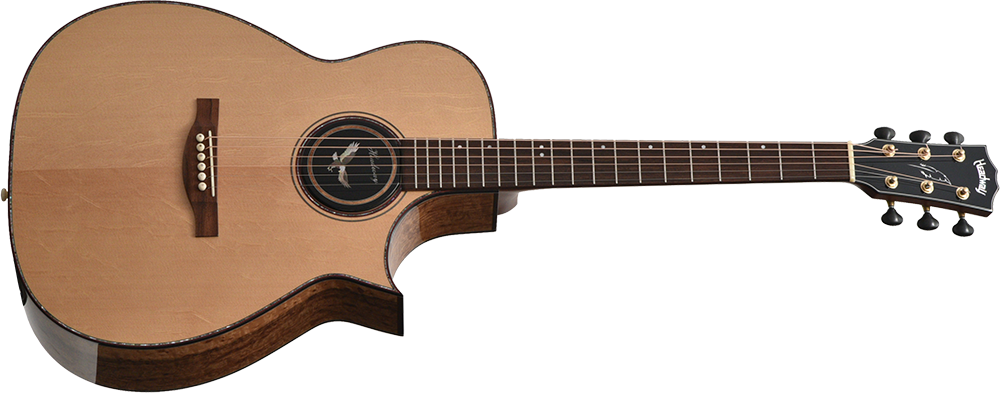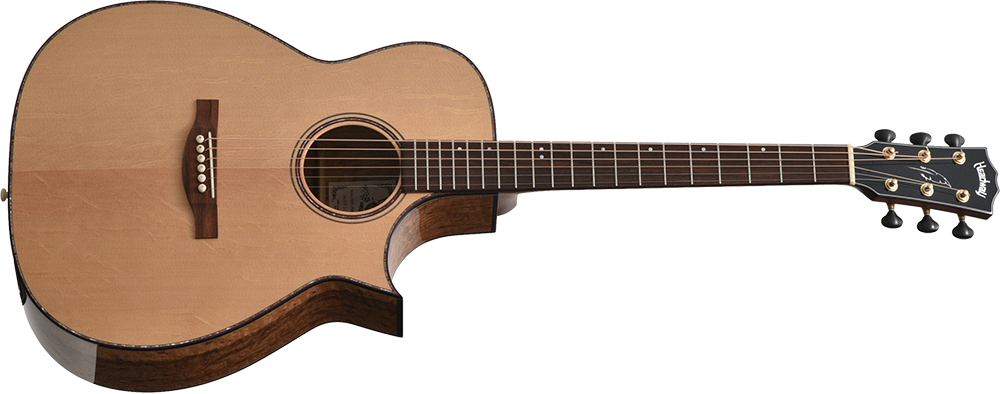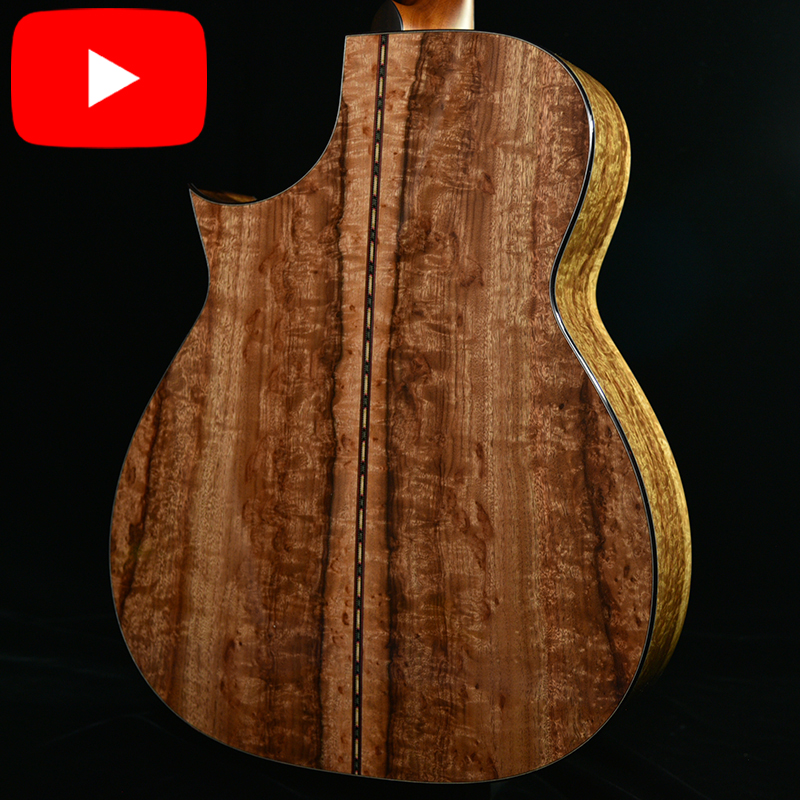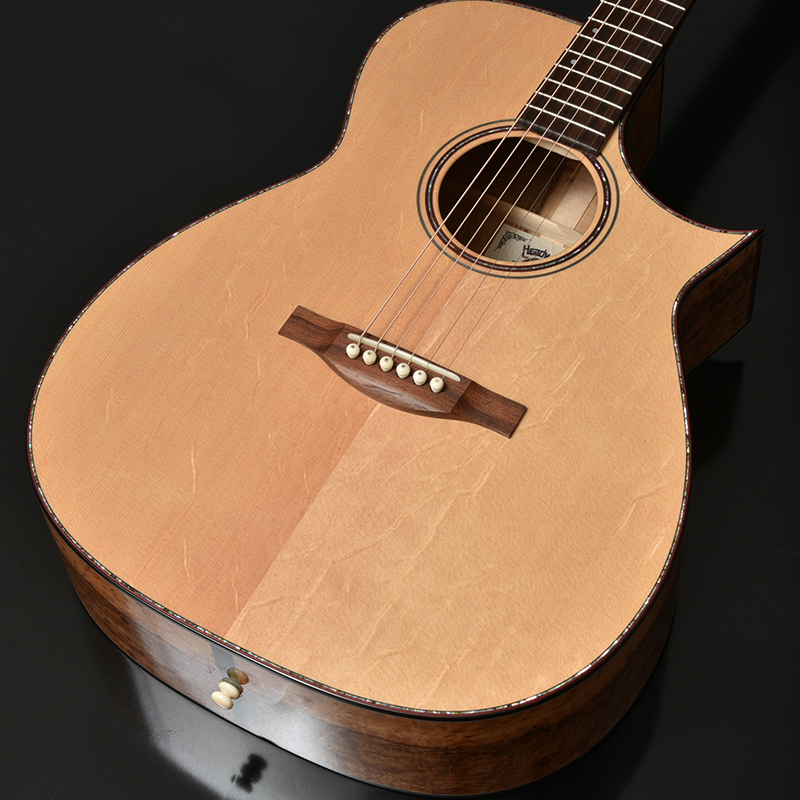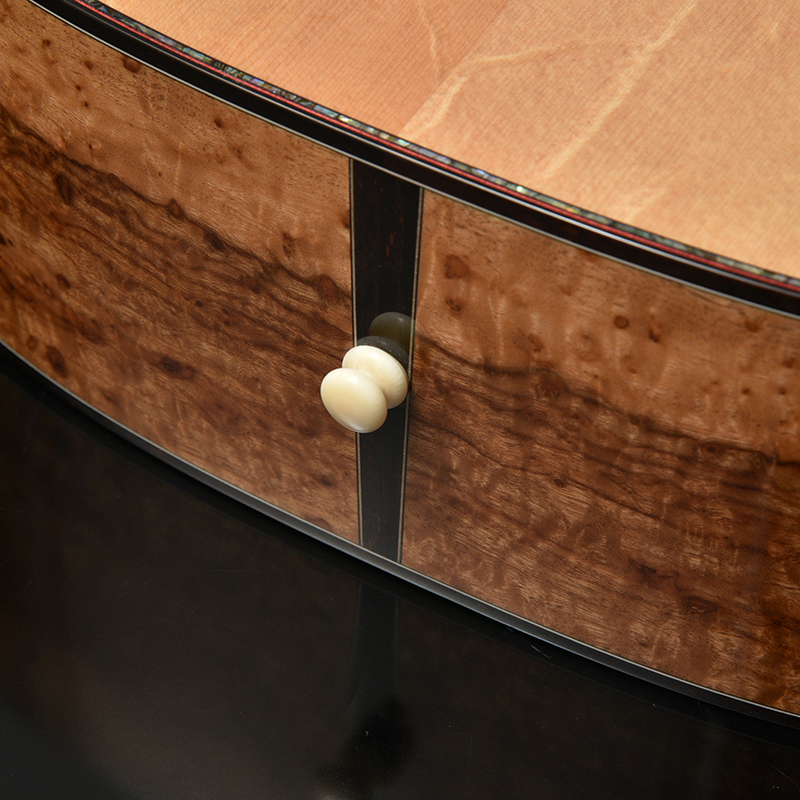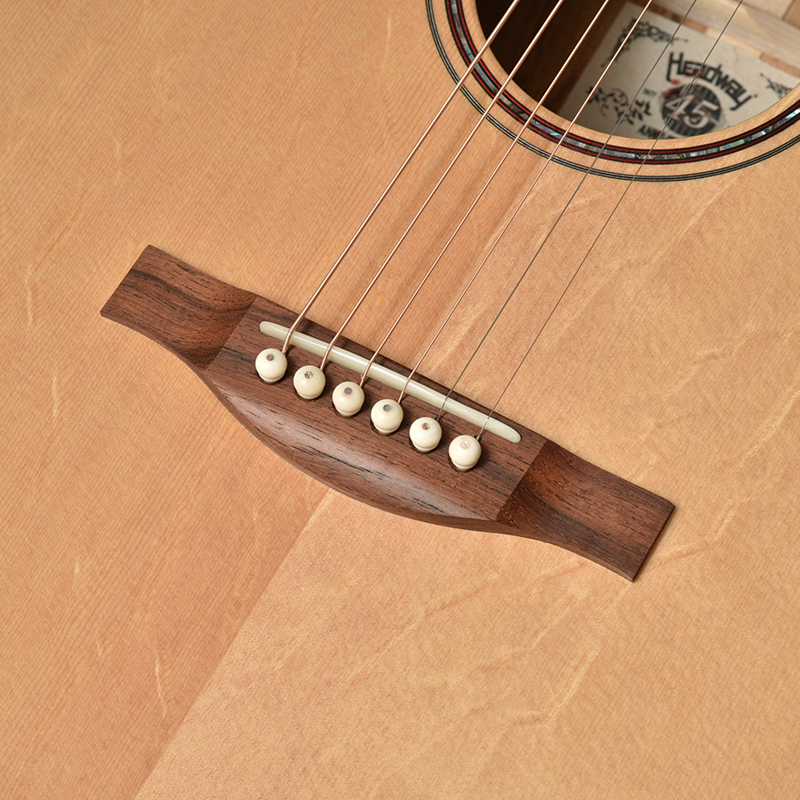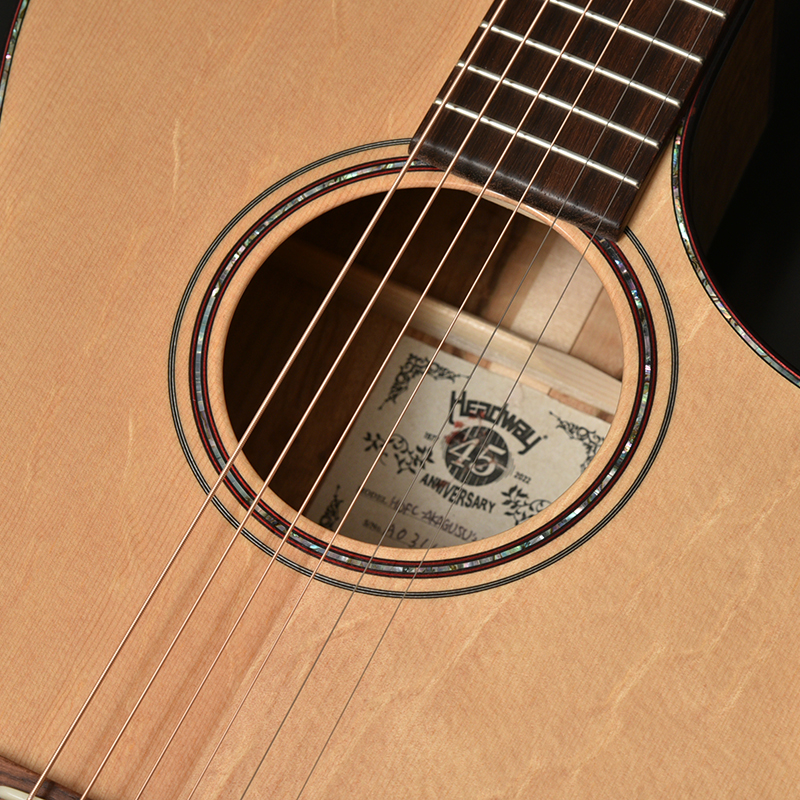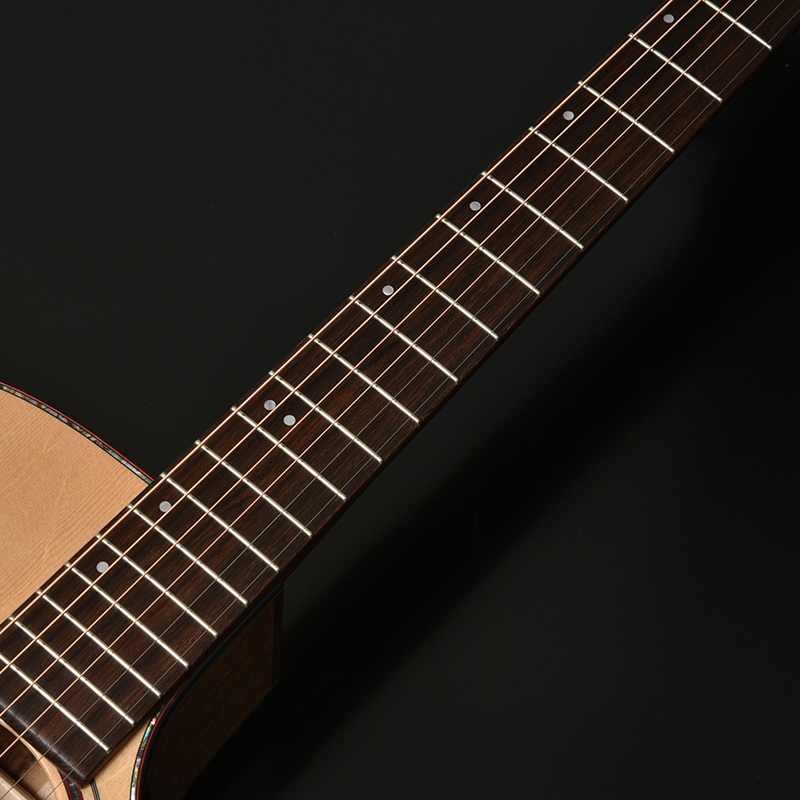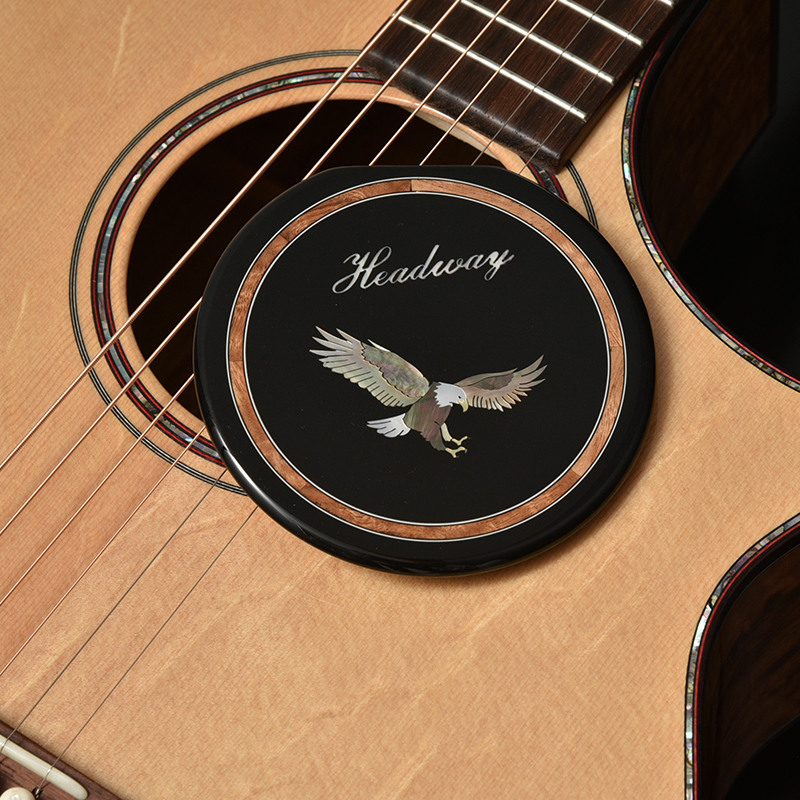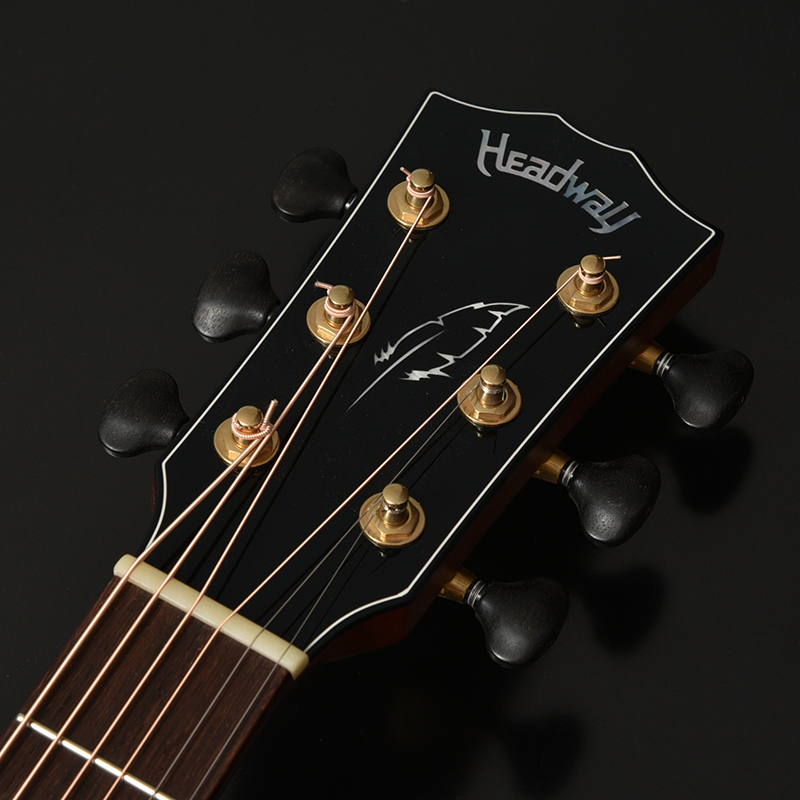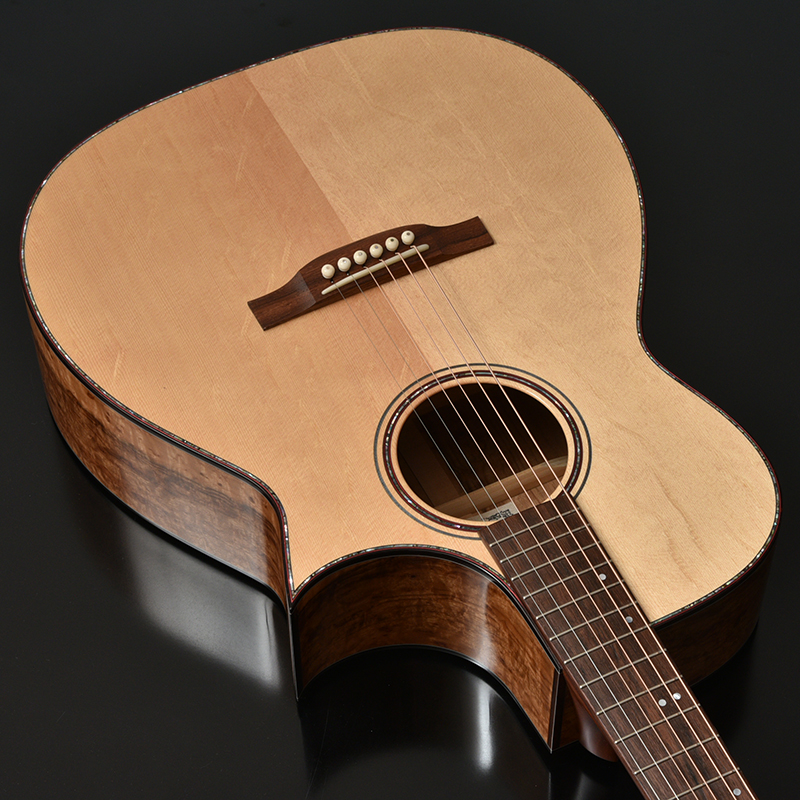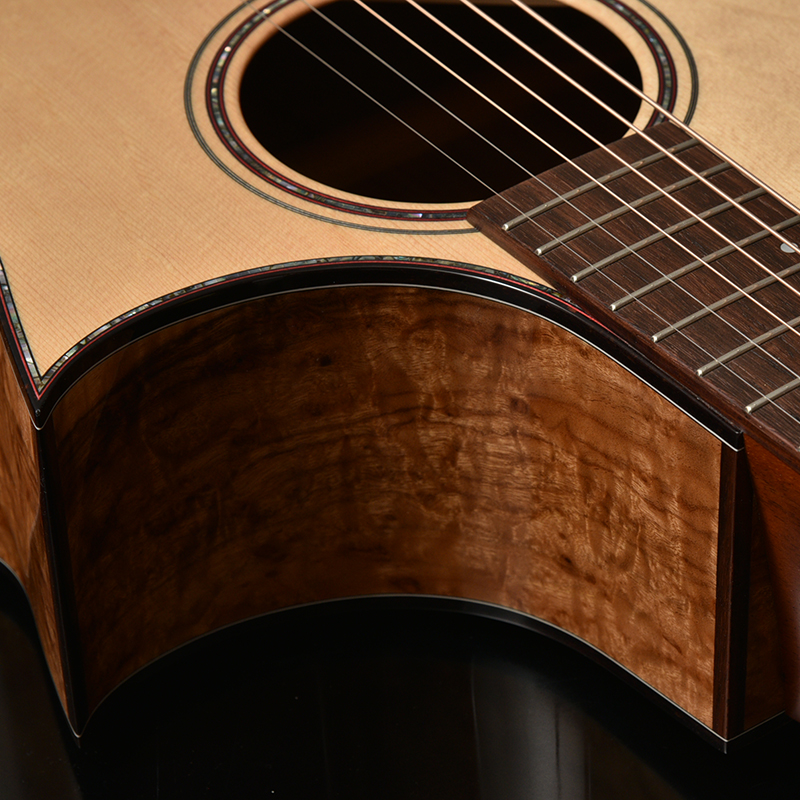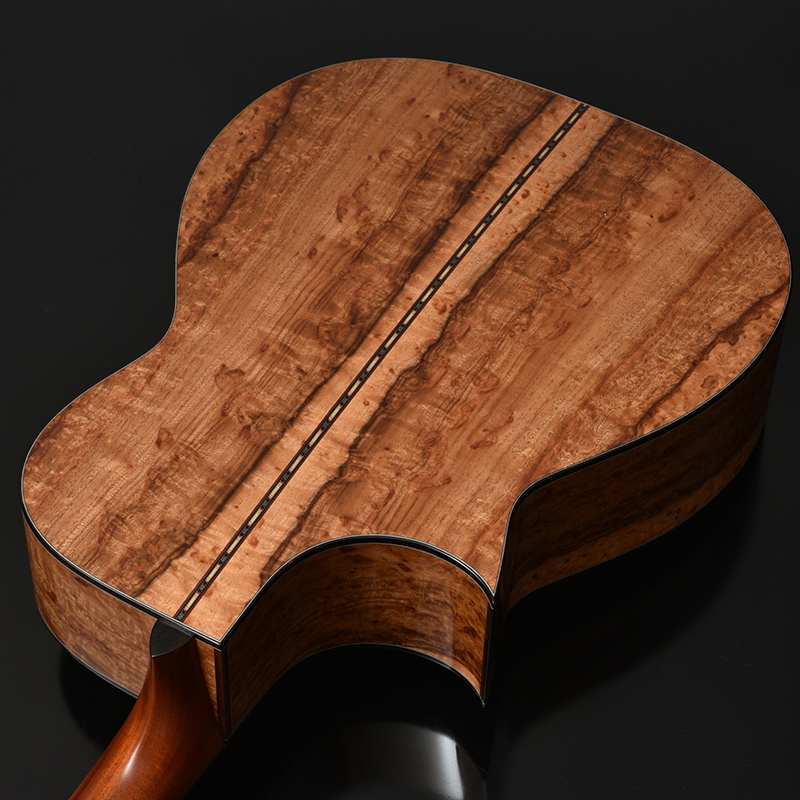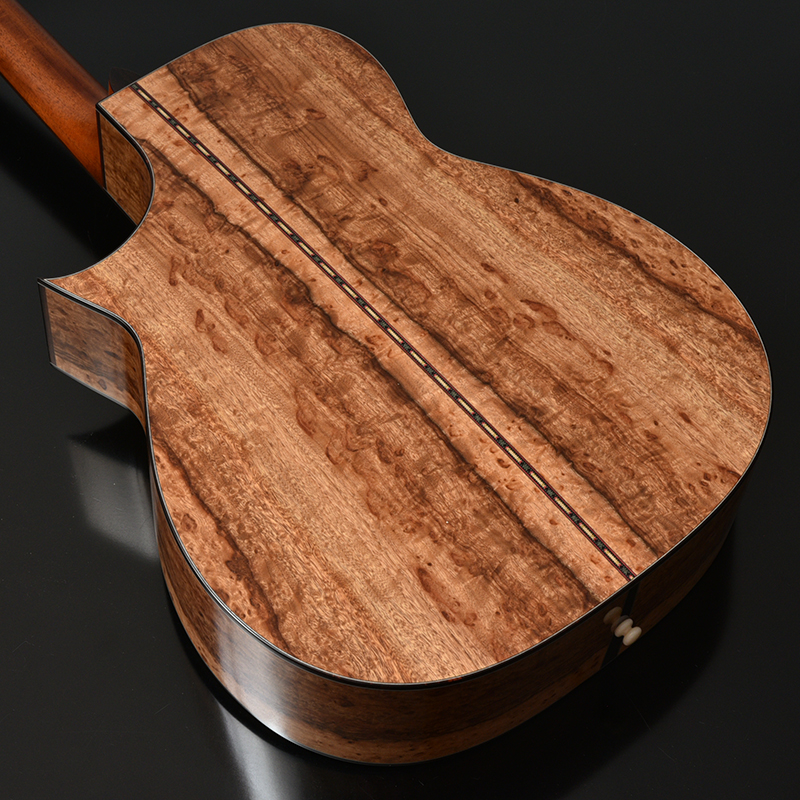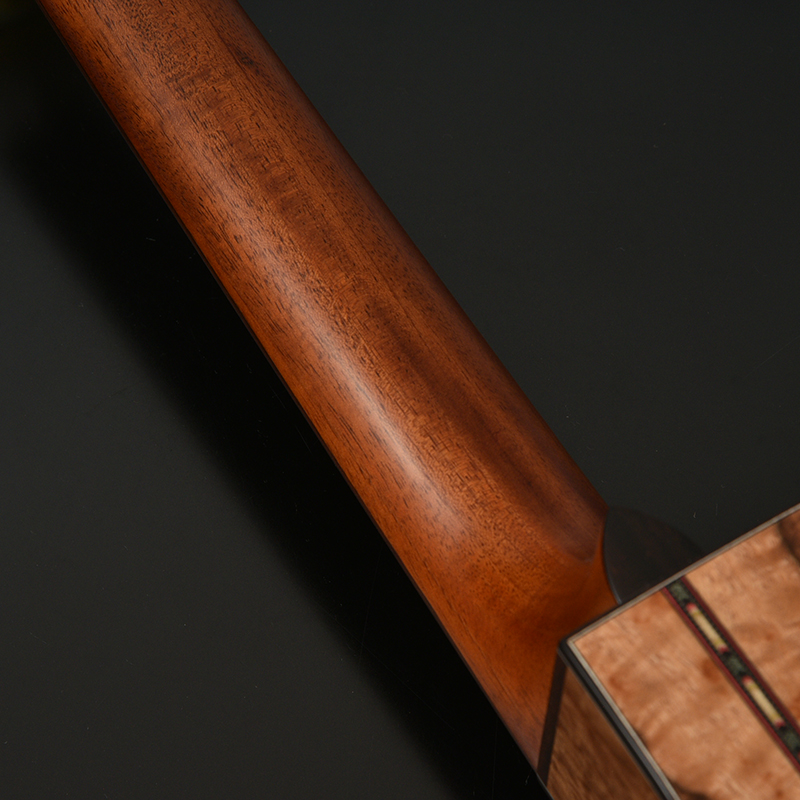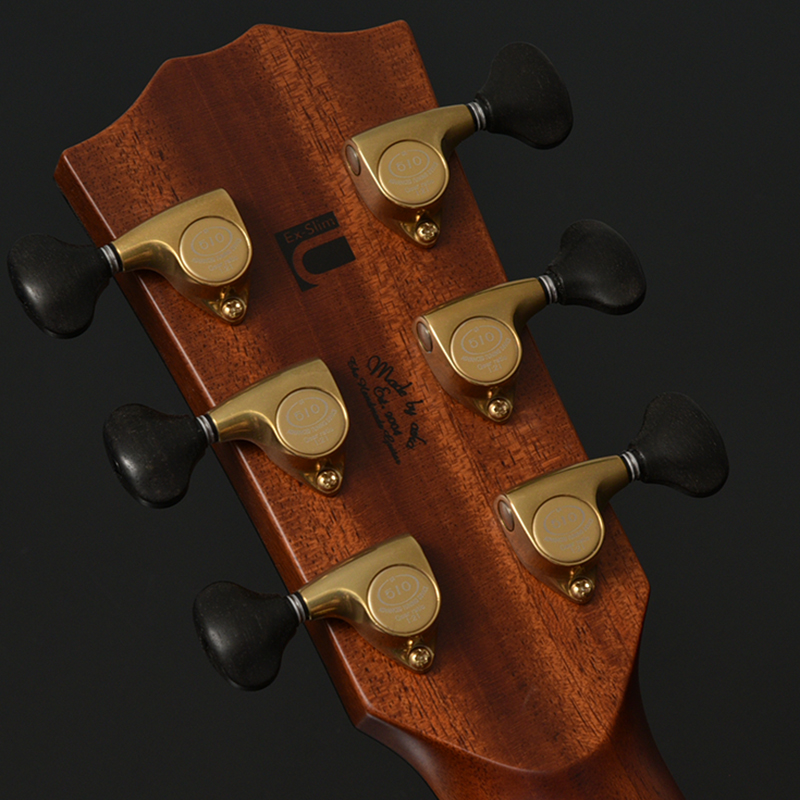HOFC-AKAGUSU’22 SF,S-ESU/ATB
MSRP¥450,000 w/o tax
製品番号:206 / 出展本数:2Specification
- Body Top
-
Bear Claw Sitka Spruce
- Body Side&Back
-
Akagusu
- Neck
-
African Mahogany1P
- Fingerboard
-
Madagascar Rosewood
- Nut
-
High Density Bone
- Saddle
-
High Density Bone
- Bridge
-
Madagascar Rosewood
- Machineheads
-
GOTOH/SGV510Z EL5 XG
- Fret
-
Jescar
- Scale
-
645mm
- Radius
-
400R
- Width at Nut
-
43mm
- Bracing
-
34 Semi-forward-shifted, Scalloped X Bracing
- Finish
-
Thin Urethane
- Strings
-
Elixir NANOWEB Light(.012-.053)
- Accessories
-
Hard Case, Allen Wrench, COA
Introduction
A stylish cutaway, the -Florentine Cutaway-
The sharp and stylish cutaway, called the “Florentine Cutaway,” is an eye-catching feature of the look.
The Florentine cutaway has a wide cutaway opening, making it easy to play in the higher frets, and also making it a popular body shape among players. However, it is very difficult to make a cutaway this sharp that also looks good, and it requires a lot of time and skill from the craftsmen since they have to make them by hand one by one.
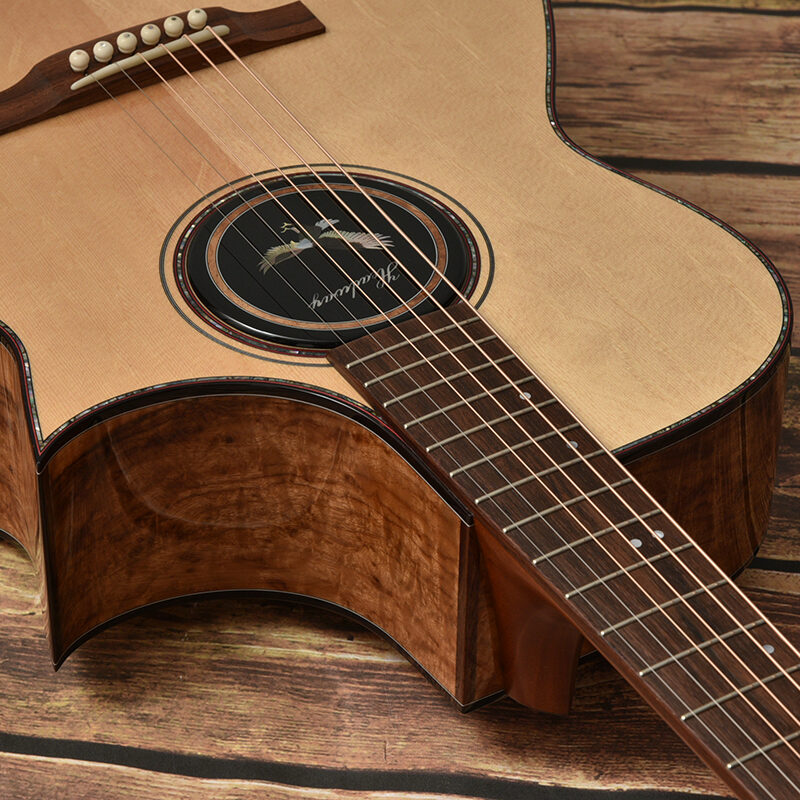
HC body shape optimized and updated to HOFC
The new -HOFC- is based on the conventional “HC” body, but the thickness of the body has been changed.
The thickness of the body has been increased by 11mm compared to the conventional -HC- model, and the volume inside the body has been increased to achieve a richer bass sound and body resonance.
The increase in body volume also gives it a more expansive sound, making it a perfect match for fingerstyle, arpeggio, and other genres where you want to hear every note.
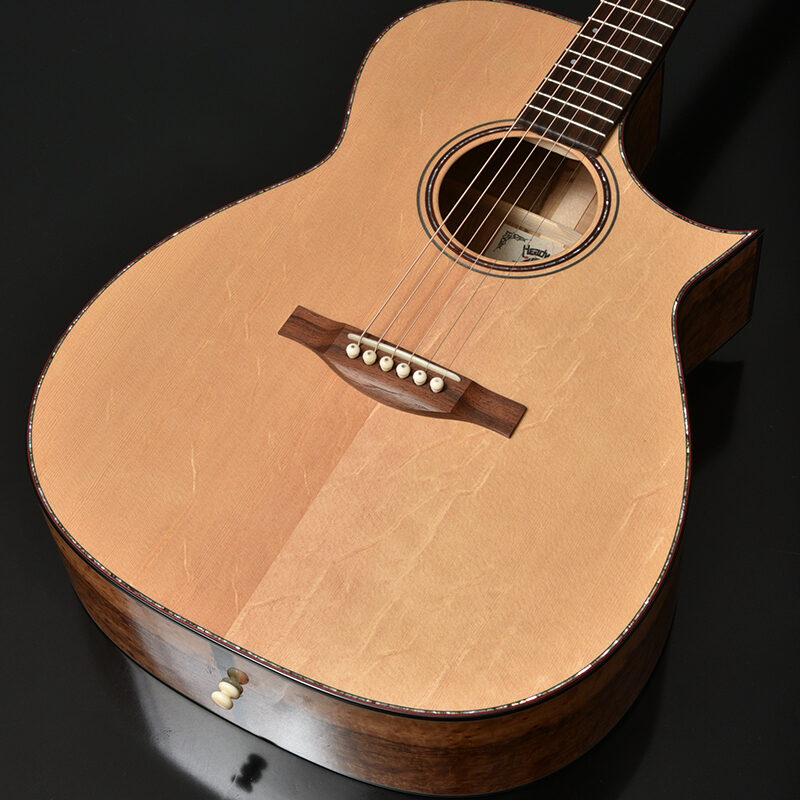
The skilled craftsmen who actually work on the ATB series bend and fit each unit by hand. The amount of force and time required varies according to the characteristics of the wood and grain. This is a technique that is only possible with the experience skill of an experienced craftsman but the results are worth the effort. This, however, makes it so it is not mass-producible, but the special feeling is unique among acoustic guitar shapes.
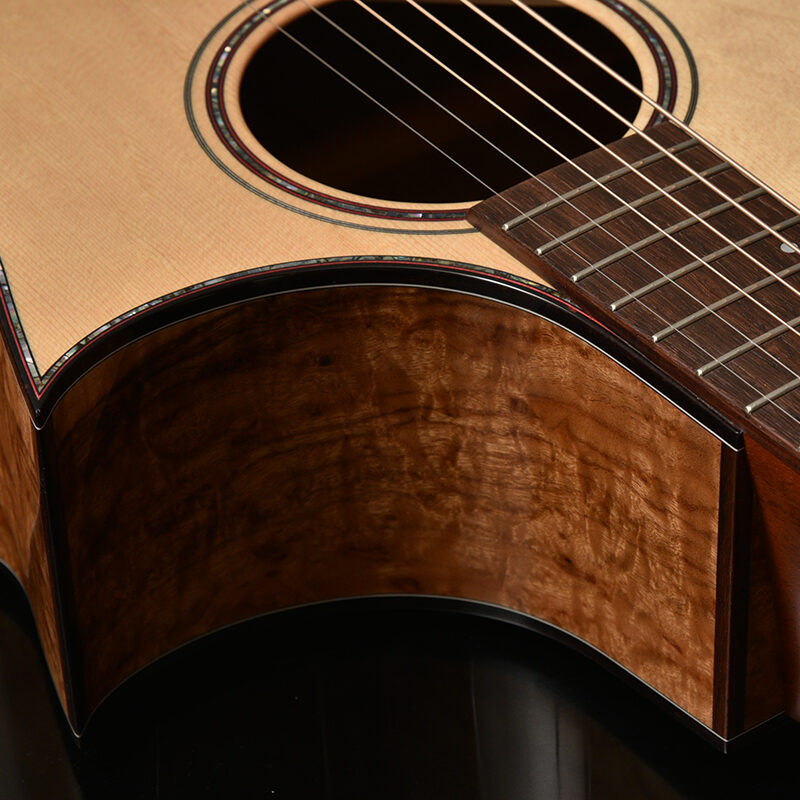
Headway Florentine Cutaway – Sound Profile
The tone of the Headway Florentine cutaway has a wide range that can be used for any genre of music, and it responds immediately to even the lightest of touches without losing a single note. The quick response allows the player to express their nuances in a straightforward manner, which is an essential element of a guitar, and this dynamism can be said to be the most distinctive feature of this guitar.
Extra slim U-neck that provides high playability
For the neck grip, which is crucial for playability, we implemented the “Extra Slim U-Neck,” Headway’s thinnest neck.
This neck is not only easy to grip, but also provides stability when playing technical phrases with the thumb on the back of the neck.
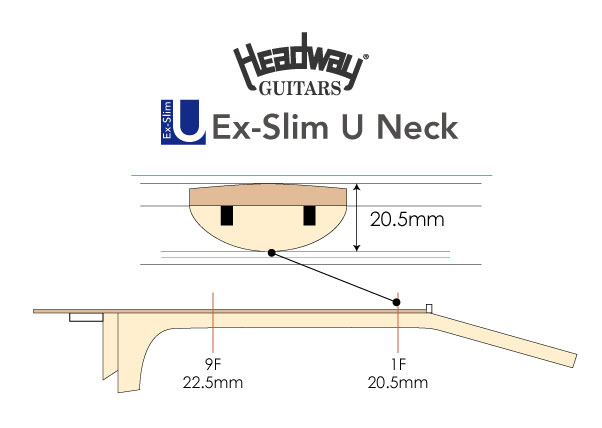
The neck is not only thin but also has carbon support bars to ensure high neck rigidity, which is important to Headway to make it a long-lasting, reliable instrument. The increased rigidity of the neck also has a positive effect on the sound, with the sound coming out more smoothly and smoothly.
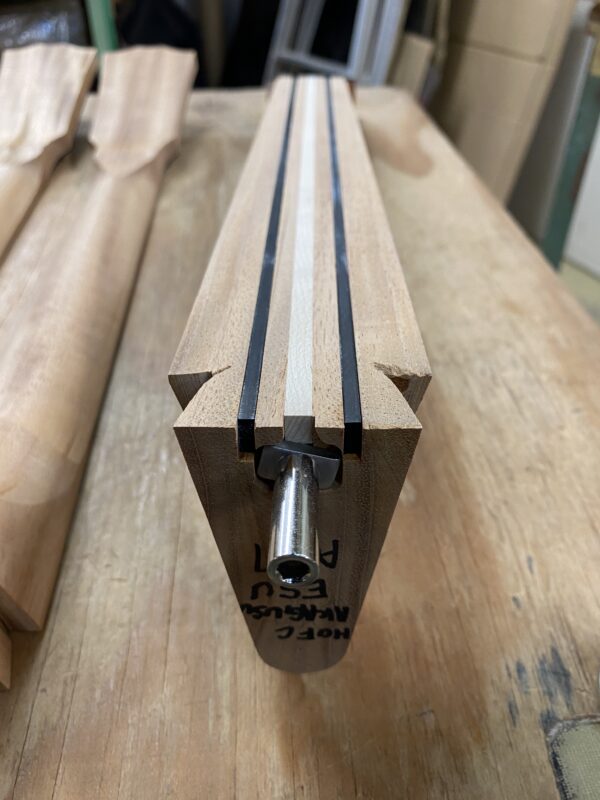
Modern “Y500” headstock & quill motif
The headstock is a stylish “Y500” headstock that matches the body shape. This headstock is a special headstock used by Masato Yasui, Headway’s custom builder and technical director, in his own custom line. The head is decorated with a simple quill motif inlay.
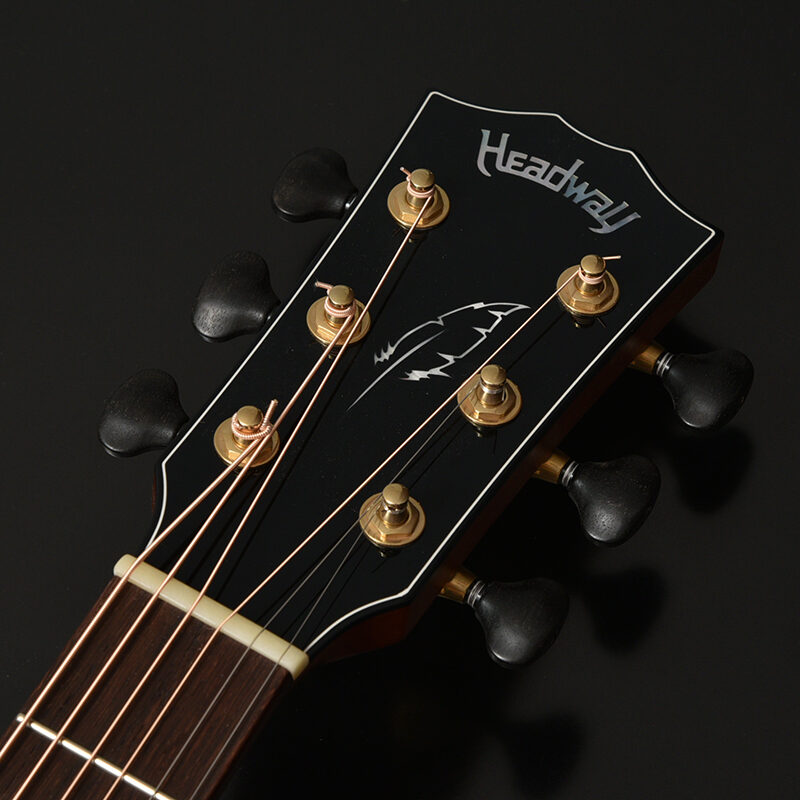
The headstock logo is a simple feather inlay with the “Headway” logo in a handwritten style.
Headway has long been using the eagle as a motif to express its intellectual image. The eagle has been a motif of Headway for many years, and the quill pen is a way to express a classy image. The quill was a major writing tool from the 5th to the 19th century and played an important role in official documents before the invention of the typewriter in the 19th century.
The new logo for Headway follows this image and is based on the image of a quill pen.
Top of the best-kept “Bear Claw Sitka Spruce”
Bear claw spruce was selected for the top material, named for its bear claw-like grain pattern.
The Bear Claw spruce is a rare and valuable material with a large, overall bear claw pattern, which is evident in both the look and sound.
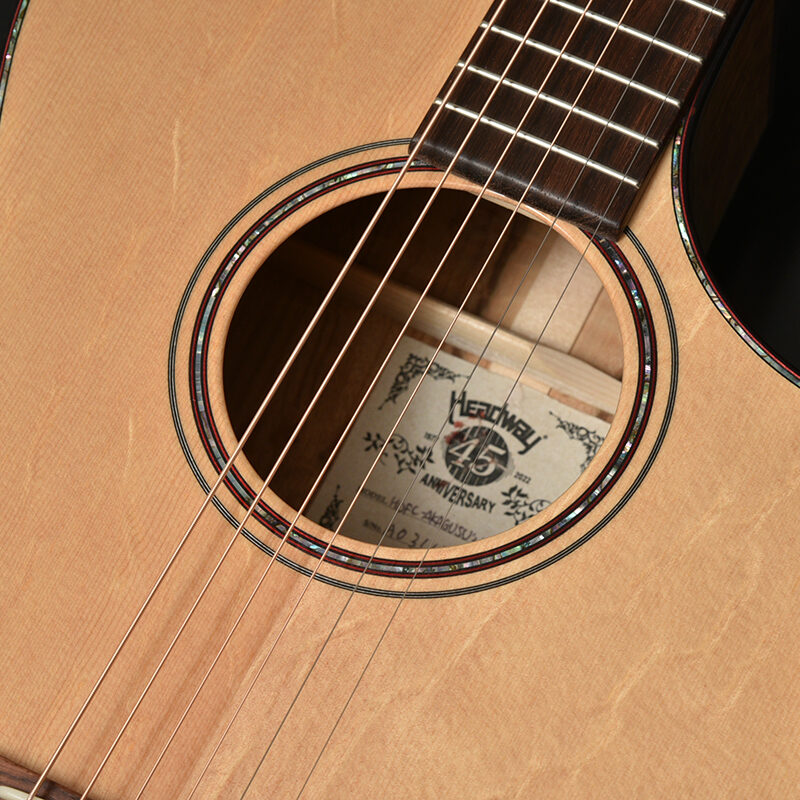
The bear claw grain pattern makes the wood stiffer and tighter than normal Sitka spruce.
As a result, the sound has more bass tension and treble sparkle, and while utilizing the unique sound of the side-back wood, the base sound is created as the heart of the instrument, enhancing the overall harmony of its sound.
Attractive Camphor wood sides and back with a striking wood grain
『アカグス』は漢字で赤楠や赤樟と書く日本でも馴染みのある『クスノキ』の一種です。そのクスノキの中で春時期や新芽が赤く見える木をアカグスと呼びます。
クスノキは日本の巨木ランキングでも上位を占める樹木の一種で、古くから家具や仏像にも用いられた他、高い防虫効果やクスノキから取れる「樟脳」と呼ばれる成分は薬にも使用されて来ました。
Akagusu is a type of camphor tree that is common in Japan, Among camphor trees, Akagusu is a tree that looks red in springtime and when its shoots sprout.
Camphor trees have been used for furniture and Buddhist statues since ancient times, and their high insect repelling effect and camphor, an ingredient extracted from camphor trees, have also been used for medicines since ancient times.
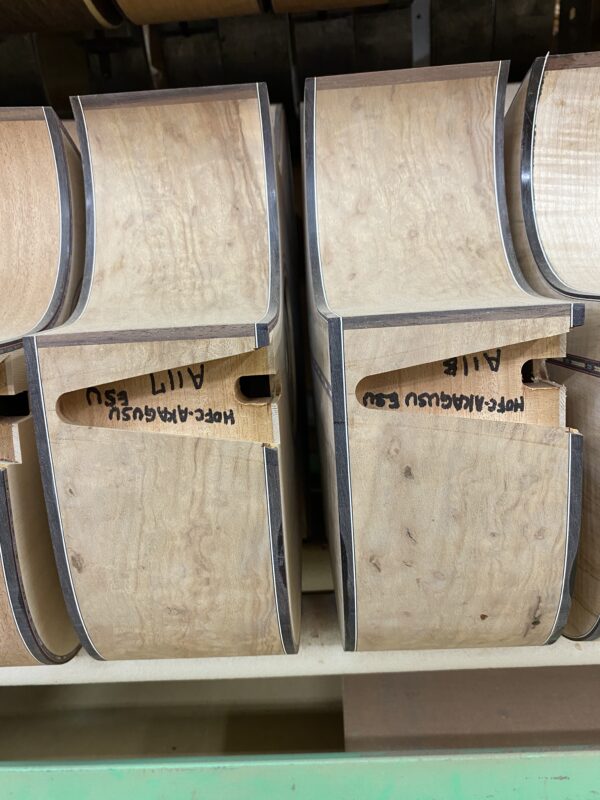
The wood used for this project is selected to have a striking grain with a mixture of burl-like grain and a unique vertical pattern. It is a rare wood that is part of the Aska factory stock.
It is also a moderately heavy wood, and its sound is powerful in the bass register, giving it a pleasant feeling that is transmitted to your body the moment you play it.
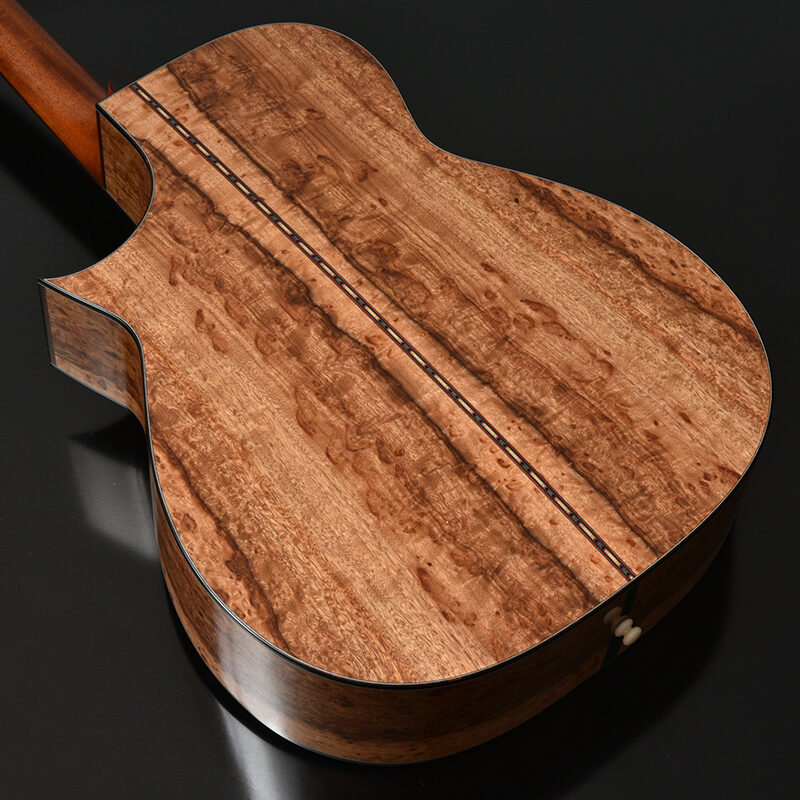
Rare Madagascar Rosewood fretboard and bridge
The fretboard and bridge are made of “Madagascar rosewood”, a material used for the first time on a HOFC model.
Madagascar rosewood, also known as “New Hakaranda” is one of the increasingly scarce rosewood species, and its difficulty in obtaining and distribution has been decreasing.
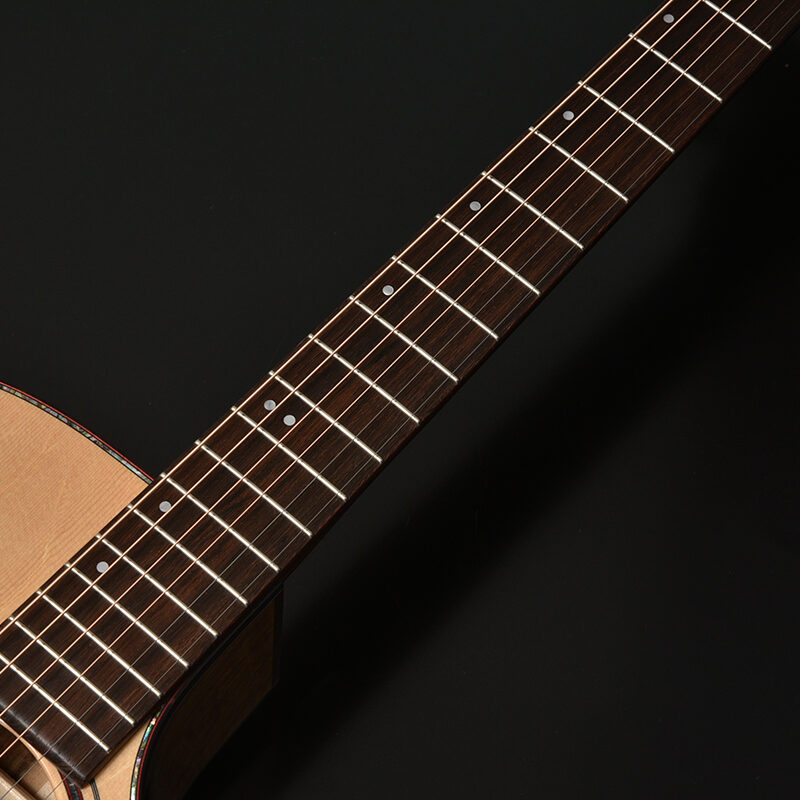
The combination with the HOFC model, which has more scenes to be played in fingerstyle, is an exceptional sound that not only rosewood fans but also various players will enjoy.
